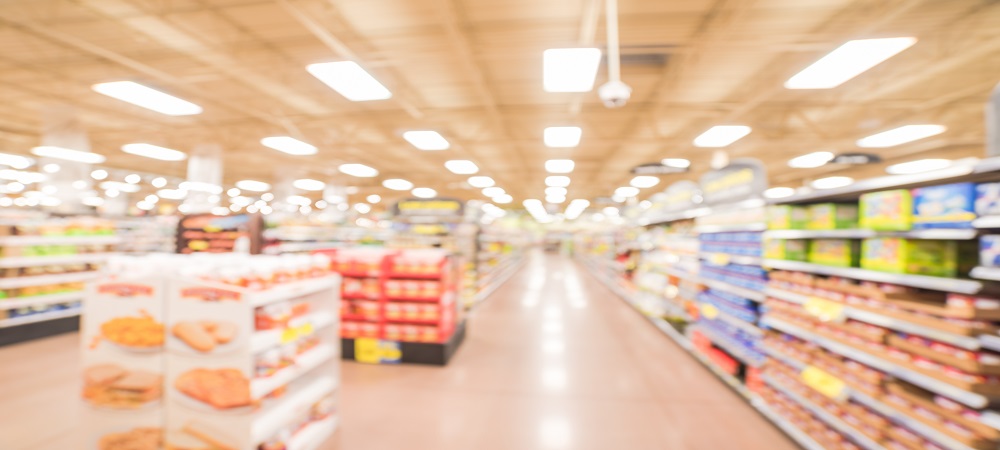Khaled AlShami, Senior Director, Solution Consulting, Middle East and Africa (MEA), on why transparency and traceability is becoming more critical for companies seeking not only to prevent food recalls but also to meet consumer demands to know more about their food.
The early days of the pandemic exposed cracks in the food supply chain as food manufacturers and retailers struggled to keep up with demand. But, even before that, transparency and traceability were becoming more critical for companies seeking not only to prevent recalls but also to meet consumer demands to know more about their food.
Khaled AlShami, Senior Director, Solution Consulting, Middle East & Africa, at digital solutions provider Infor, discusses the current state of food transparency and traceability as well as how software can help companies improve in these areas.
One: How the pandemic affected the need for traceability and transparency in the food supply chain
The pandemic has highlighted the fragility of global supply chains. Food processors saw a big shift in demand from the out-of-home segment to grocery stores, on-line sales and home deliveries. At the same time, production facilities had to work in different shifts to reduce the risk of having to shut down the factory because of employees testing positive.
Raw material supply could and still can, be an issue. Sea container transportation can be delayed and preferred suppliers can have shortages. It made businesses aware that supply chain resilience is critical in these turbulent times. Transparency is key for a resilient supply chain. It must be visible where goods are, what the expected arrival times are and which resources are available in the supply chain from farm to fork. It’s not only about quantities and timing, but also about qualities, origin and certificates. As an example, you might be able to source from an alternative supplier that is satisfactory for most of your customers, but for some customers in some countries it isn’t. Having this transparency requires a digital and connected supply chain.
Two: Pressures increasing the need for traceability and transparency
A survey by Nielsen in 2018 showed that 67% of the consumers want to know everything that goes into the food they buy. Since the pandemic, consumers are spending more money on their meals at home and are more conscious about the origin of the ingredients, how healthy the food is and its ecological footprint.
Already a couple years ago, legislation was put in place in most countries regarding clear label information and food safety. Examples are FSMA in the US and Rapid Alert System for Food and Feed (RASFF) in the EU for food safety and recalls. The reason for this was a number of food scandals in the past, but more is needed to re-establish consumer trust. We see retailers demanding origin and sustainability evidence per supplied lot.
Three: End-to-end traceability: Challenges and areas for improvement
Last year, Infor did a survey of food processors, with 50% of respondents saying that their traceability is not completely digital yet — even within the four walls of their factory. That means that a lot of traceability data is still confined to paper form and in isolated applications like spreadsheets. 43% responded that it’s partly digital, indicating that the quality test results are not connected to the track and trace.
The consequence of this is that quality issues cannot easily be pinpointed to a specific lot, that a root cause analysis cannot be done immediately and that recalls are less targeted and are having a bigger impact. To combat this, a digital system firstly is needed to capture all goods transactions on a lot level. Secondly, origin information, certificates and quality test results must be connected to the lots within the same digital system. Thirdly, traceability and transparency should be extended upstream towards the suppliers and downstream towards the customers.
Four: Technology to boost traceability
The digital system mentioned before is typically a food processing enterprise resource planning (ERP) system and in some cases, a manufacturing execution system (MES). However, extending the traceability outside the four walls of the factory goes beyond ERP and MES. It’s really about connectivity with the upstream and downstream supply chain and the ability to capture data from Internet-of-Things (IoT) sensors. Blockchain and IoT data is tied to the track and trace and Artificial Intelligence (AI), helping to drive smart decisions that avoid food safety issues and reduce food, water and energy waste.
A big advantage of cloud is its ability to scale seamlessly. Cloud is also the opportunity to implement changes faster, as opposed to having to do technical migration projects, which often involve a step backward before being able to take steps forward.
Five: Improving recall response with tech
With technology like a food and beverage industry specific ERP, suspect lots can be identified within seconds because the supply chain is visualised, showing a full picture of the origin of ingredients and the destination of the products. Origin details, certificates, quality test results and IoT readings can be analysed immediately to determine the root cause of issues, letting businesses quickly perform a targeted recall if needed. It’s also important to note that the technology constantly monitors the consistency of the traceability. This prevents a common issue many food processors have — broken traceability chains due to an ingredient not being booked as consumed in the product.
Click below to share this article

